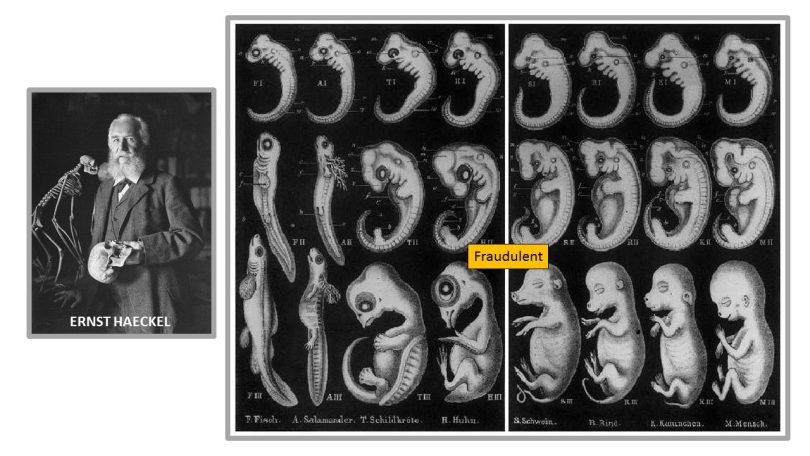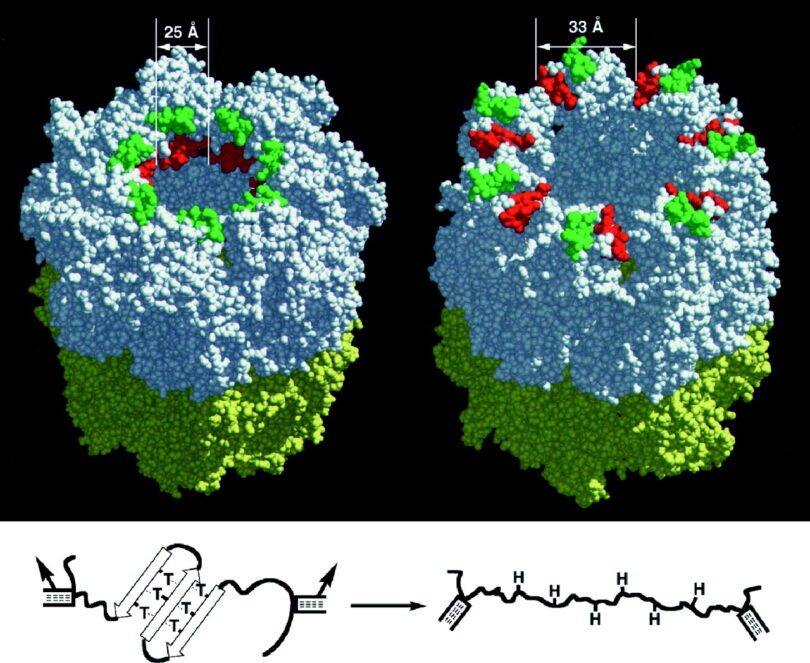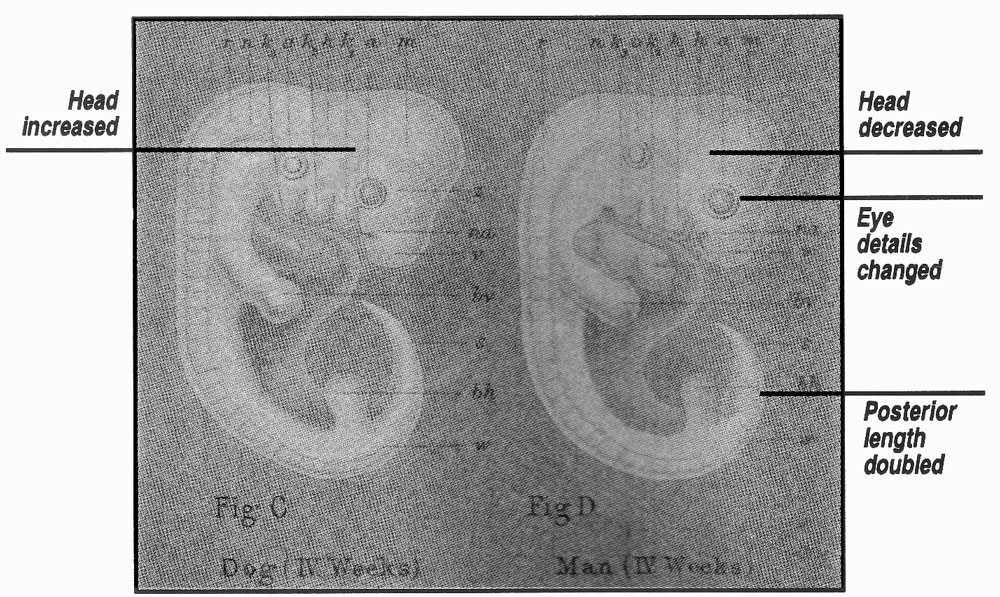
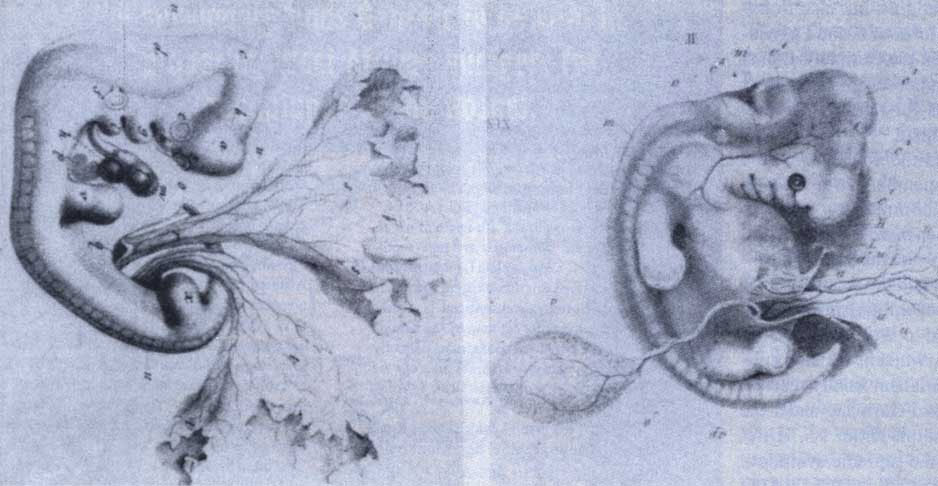
This is one of the worst cases of scientific fraud. It’s shocking to find that somebody one thought was a great scientist was deliberately misleading. It makes me angry … What [Haeckel] did was to take a human embryo and copy it, pretending that the salamander and the pig and all the others looked the same at the same stage of development. They don’t … These are fakes.”
Nigel Hawkes, The Times (London), p. 14, 11 August 1997.

The idea was so convincing, that despite the known fraud the drawing are, the images of embryo evolution perpetuates into most biology textbooks even into modern day.
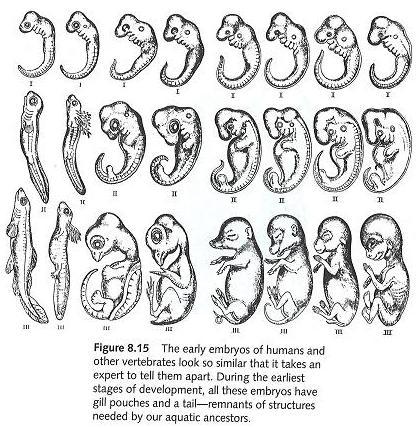
Continued to publish this known fraud of Haeckel
Many textbook publishers conceal the deception by illustrating the drawings while writing a mild disclaimer that such images were “misrepresentations” of actual embryo’s and perhaps show a more modern photo of an embryo. However, they going on to completely validate the very premise the fraudulent drawing illustrated!
Miller (publisher of the textbook above) testified that at its peak usage, students in “more than 200 colleges and universities around the country” read…textbooks like this one.
The Dover Trial, Day 1 morning testimony, pg. 41
Haeckel also fudged the scale to exaggerate similarities among species, even when there were 10-fold differences in size.”
“Haeckel further blurred differences by neglecting to name the species in most cases, as if one representative was accurate for an entire group of animals”.
Elizabeth Pennisi, Haeckel’s Embryos: Fraud Rediscovered, Science 277(5331):1435, 5 September 1997.
An international team collaborated to compare Haeckel’s drawings to actual photographs of embryos because apparently despite the known forgery of the old drawings, no one had yet corrected the data. The team collected embryos from 39 different creatures, including marsupials from Australia, tree-frogs from Puerto Rico, snakes from France, and an alligator embryo from England. They found that the embryos of different species are very different.
In fact, they were so different that the drawings made by Haeckel (of similar-looking human, rabbit, salamander, fish, chicken, etc. embryos), the team concluded that Haeckel’s drawings could not have even been based on any real specimen.
Michael Richardson et al., Anatomy and Embryology 196(2):91–106, 1997.
“Haeckel’s confession got lost after his drawings were subsequently used in a 1901 book called ‘Darwin’ and ‘After Darwin’ and reproduced widely in English language biology texts”.
Elizabeth Pennisi, Haeckel’s Embryos: Fraud Rediscovered, Science 277 (5331):1435, 5 September 1997.
Seeing this fraud continues in “science” books through modern day, when will there now be a rush by libraries, universities, and publishers of textbooks to finally withdraw this fraudulent science from circulation for good? Or, does the fraud persist because the idea of ’embryonic similarities’ help ‘teach’ evolutionary truth? Or, is it simply without such perpetuation of academic fraud (as most icons are frauds) would eventually leave evolution without any “evidence“?
Nevertheless, the recapitulation idea (embryo similarity) is still advanced as evidence for the theory of evolution in many books and particularly encyclopedias and by popular evolutionists such as the late Carl Sagan.”
E.g, World Book Encyclopedia 6:409–410, 1994; Collier’s Encyclopedia, 1994, 2:138, 1994; Carl Sagan, The Dragons of Eden, Book Club Associates, London, pp. 57–58, 1977.
https://creation.com/fraud-rediscovered
evolutionnews.org/2007/05/the_textbooks_dont-lie-haeckel/

